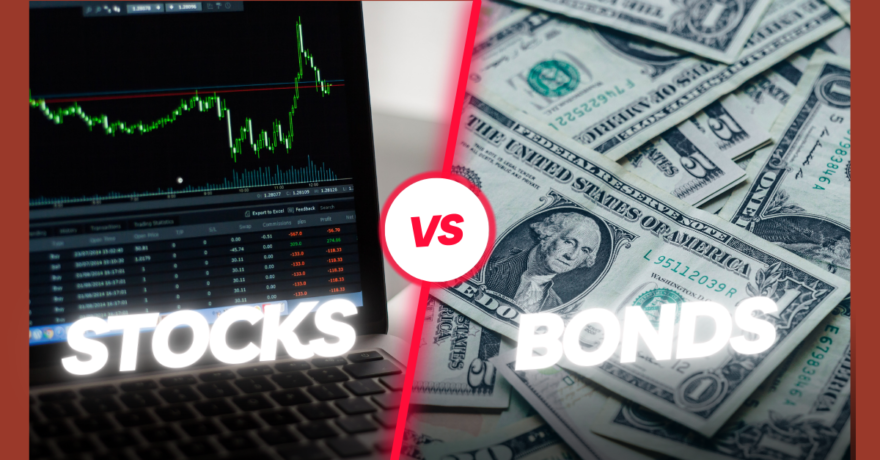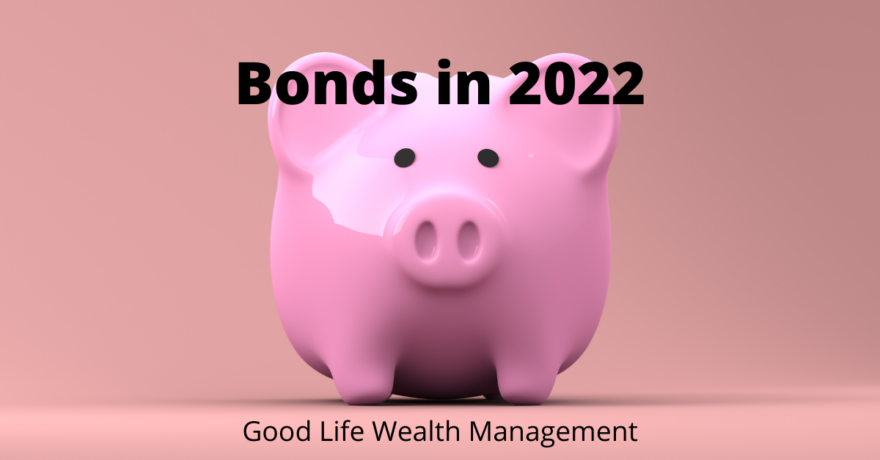Where is the best opportunity – in stocks or bonds? I’ve been enthusiastic about the rising interest rates in 2022 and this has impacted the relative attractiveness of stocks versus bonds today. What do we expect from stocks going forward?
Vanguard’s Investment Strategy Group publishes their projected return for stocks for the next 10 years. And while no one has a crystal ball to know exactly how stocks will perform, this is still valuable information. They look at expected economic growth, dividend yield, and whether stock values (P/E ratios for example) might expand or contract.
Their median 10-year expected return for US stocks is 5.7%, with a plus or minus 1% range, for a range of 4.7% to 6.7%. This is actually up from the beginning of the year. As stocks have fallen by 20%, we are now starting from a less expensive valuation. But a projected return of 5.7% for the next decade would be well below historical averages, and most investors are hoping for better.
Is Vanguard being too pessimistic? No, many other analysts have similar projections which are well below historical returns. For example, Northern Trust forecasts a 6% return on US stocks over the next five years. And of course, these are just projections. Returns could be better. Or worse!
Bonds Are An Alternative
Last week, I bought some investment grade corporate bonds with a yield to maturity of 6% over three to five years. Bonds have much less risk than stocks and have only a fraction of the volatility of stocks. As long as the company stays in business, you should be getting your 6% return and then your principal back at maturity.
If we can buy a good bond with a return of 5.5% to 6.0%, that completely matches the projected stock returns that Vanguard expects. Why bother with stocks, then? Why take the risk that we fall short of 6% in stocks, if we can get a 6% return in bonds? Today, bonds are really attractive, even potentially an alternative to stocks.
For many of our clients, bonds look better than stocks now. And so we may be trimming stocks by year end and buying bonds, under two conditions: 1. The stocks market remains up. We are not going to sell stocks if they fall from here. 2. We can buy investment grade bonds, 3-7 years, with yields of at least 5.5% and preferably 6%. And we have to find different bonds, because we aim to keep any one company to no more than 1-2% of the portfolio.
We won’t be giving up on stocks – not at all. But we may look to shift 10-20% of that US stock exposure to bonds.
Three Paths for the Market
I think there are three scenarios, all of which are okay.
- Stocks do way better than 6%. The risk here is that stocks could perform much better than the 5.7% estimate from Vanguard. Maybe they return 8% over the next five years. Well, this is our worst scenario: we make “only” 6% and are kicking ourselves because we could have made a little bit more if we had stayed in stocks.
- Stocks return 6% or less. In this case, it is possible we will get the same return from bonds as the expected return from stocks. And if stocks do worse than expected, our bonds might even outperform the stocks. That’s also a win for bonds.
- Stocks decline. What if the economy goes into recession, and stocks drop? If stocks are down 10% and we are up 6% a year on bonds, we will be really happy. In a recession, it’s likely that yields will drop and the price of bonds will increase. The 6% bond we bought might have gone up in value from 100 to 104. Then, our total return on the bond might be 10%, and we could be 20% ahead relative to stocks’ 10% drop. And in this scenario, we don’t have to hold the bonds to maturity. We could sell the bonds and buy stocks while they are down.
Smoother is Better
I’m happy with any of those three scenarios. Many investors are feeling some PTSD from the market performance since 2020. Many will be happy to “settle” for 5.5% to 6% from bonds, versus the 5.7% expected return from stocks. And of course, stocks won’t be steady. They may be up 20% one year and down 20% the next. It is often a roller coaster, and so increasing bonds may offer a smoother ride while not changing our expected return by much at all.
Should everyone do this? No, I think if you are a young investor who is contributing every month to a 401(k) or IRA, don’t give up on stocks. Even if the return ends up being the same 6%, you will actually benefit from the volatility of stocks through Dollar Cost Averaging. When stocks are down, you are buying more shares. So, if you are in accumulation, many years from retirement (say 10+), I wouldn’t make any change.
But for investors with a large portfolio, or those in or near retirement, I think they will prefer the steady, more predictable return of bonds. When the yield on bonds is the same as the 5-10 year expected return on stocks, bonds make a lot of sense. The risk/reward comparison of stocks versus bonds today is clear: bonds offer the same expected return for less risk. We will be adding to bonds and adjusting our portfolio models going into 2023.





